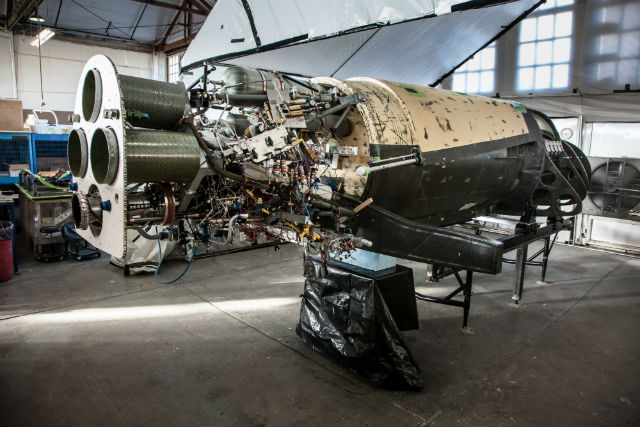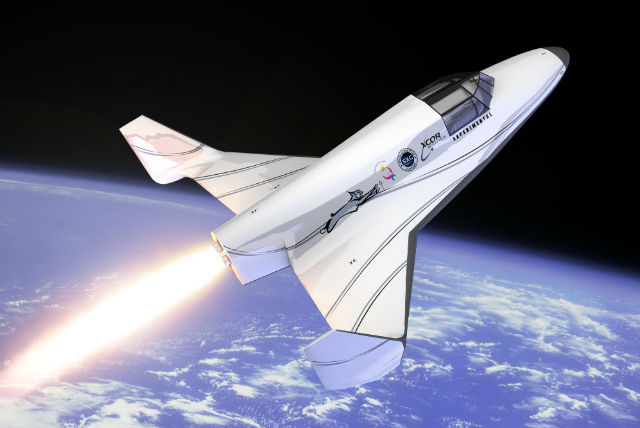While Virgin Galactic waits for the results of an NTSB investigation into the 31 October 2014 fatal crash of SpaceShipTwo, another Mojave-based suborbital hopeful is making steady progress towards first flight of a very different concept.
Where SS2 needs to be lifted to altitude by its jet-powered carrier aircraft, WhiteKnightTwo, XCOR Aerospace’s Lynx promises a similar edge-of-space flight experience at 100km – but in a runway-to-runway rocketplane.
Lynx is also much smaller; where SS2 can accommodate two pilots, six paying passengers and a flight attendant, Lynx will take one pilot and one passenger and, in a later version, payloads of up to 650kg (1,430lb).
XCOR is not detailing its timetable, beyond saying it will “begin flight test operations in 2015”. The first Lynx all-composite airframe is taking shape, marking in December 2014 the milestones of bonding the cockpit and carry-through spar to the fuselage. Chief executive Jeff Greason says: “We're really excited to have achieved this step. It paves the way for the strakes to be attached as the next step. Thanks to the hard work of the composites crew, we're proceeding at a very rapid pace toward first flight."
The structure, he adds, has also been load-tested to the equivalent of 6g re-entry, and the cabin was pressurized to 0.76bar (11psi).
Fundamentally, XCOR is a rocket motor company building an air/spacecraft around a proprietary liquid fuel powerplant. Precursor projects included the EZ-Rocket rocket-powered aircraft built around a restartable XCOR motor, which flew at AirVenture Oshkosh in 2002. Meanwhile, the more powerful X-Racer featured a liquid oxygen-kerosene engine and a piston fuel pump – a key XCOR technology that will also drive Lynx.
The company is also working under contract to United Launch Alliance, the joint venture behind the Delta IV and Atlas V rockets used by the US Air Force for national security launches and for some NASA flights. In November 2014, XCOR hot-fired the XR-5H25 liquid hydrogen engine it sees as a candidate to replace the Delta and Atlas upper stages.
The Lynx MkI being assembled for flight in 2015 is designed to reach 200,000ft, or 61km. XCOR expects to use the MkI to train pilots for the MkII – designed to achieve the full 100km altitude promised for suborbital missions in a roughly half-hour flight that concludes with a glide home to the runway.
That unpowered glide home is a characteristic shared with SS2, although XCOR points to the inherent restartability of its liquid fuel motors – SS2 runs on a liquid-solid hybrid – as giving the pilot great flexibility.
One other feature shared by the two programmes is tardiness. At one point, XCOR was talking about flying from early 2013.

Lynx under construction
XCOR

Lynx: artist's impression
XCOR
Source: FlightGlobal.com























